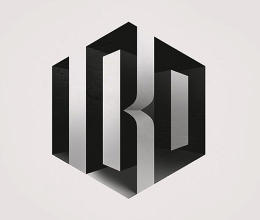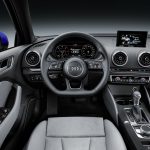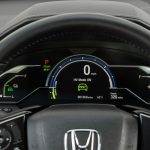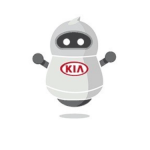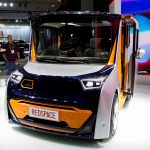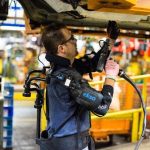Ford’s Quest To Remake Itself right into a master Of UX
the most annoying thing about aging 30 years in quarter-hour was once the crook in my backbone and the sag in my shoulders. It felt like being stuffed into some smaller model of myself, however I used to be lucky. “I’m being good,” mentioned the woman who’d just geared up me into the suit, designed to simulate outdated age. “I could have given you back problems, too. Now you just have a bit of of a stomach.”
similar to I used to be doing now, every new ergonomics engineer at Ford will get a flip in the swimsuit. it can be meant to show what’s one of the essential rule of design: Your shoppers’ lives don’t seem to be your own, and also you’re designing for them. From the surface, the get-up seemed like SWAT gear. difficult as it looks, every this type of items used to be designed now not to give protection to me, however to slow me down and simulate decrepitude. The braces on my elbows and knees minimize the variety of motion in my joints via 75%. Straps pulled down my shoulders and again, while weights, fixed around my belly like a life jacket, simulated a couple more decades value of french fries. the ultimate, genius contact: a vibrating counterweight on my right hand, to simulate a hand struck by using Parkinson’s tremors.
I was instructed to take a look at and get into a Ford F-one hundred fifty, but I could barely make out what the hell it was I was purported to do first. My hearing was gone, buried at the back of a stifling headset. The photographer I introduced alongside was shifting her lips in my path. perhaps even looking at me? I creaked ahead in an old man lurch, mouth agape, and croaking at a ridiculous quantity, “WHAT DID YOU SAY?” To get into the truck, I had to provide a leery appraisal of the handholds. Sitting down gracefully was out of the query. I needed to level my butt on the chair and collapse, letting gravity do what my knees might now not. I was once performing old with out even making an attempt. Which was once precisely the purpose of the go well with: It’s laborious to explain what being 70 is like. So you need to make anyone feel what it’s like.
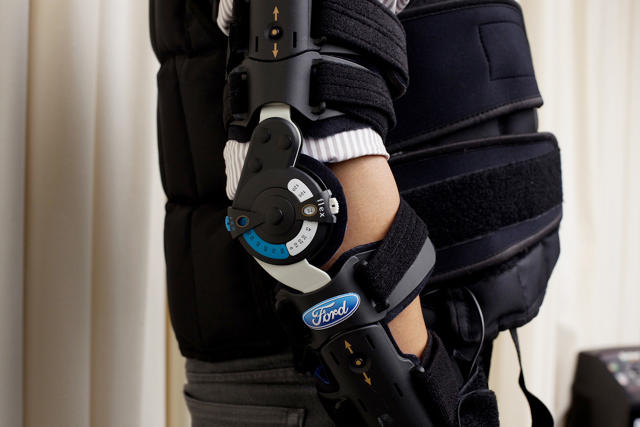
possibly you’re considering: All that empathy stuff is sweet, however automobiles aren’t exactly bastions of fine design. You’re proper. They’re jammed up with buttons and knobs and symbols and lights. They get more complicated every year, at the same time as the collection of features we use rarely grows in any respect. someplace, between the great-hearted intentions of this suit—which was first developed at Ford 20 years ago—comes the state of the modern automobile: you’ll have an iPhone, however most cars feel more like the device simplest your uncle might work out, rising up.
but the state of the brand new automotive is strictly what Ford has been seeking to get right. The growing old swimsuit that I’d just tried on used to be a good instance of subtle concepts that never relatively made it up to the top ranks of company gospel. Ford, bastion of the outdated-school American financial system, is now trying to recast itself as a company constructed round consumer expertise. It’s at last looking to see its cars throughout the purchaser’s eyes. it can be designing for them.
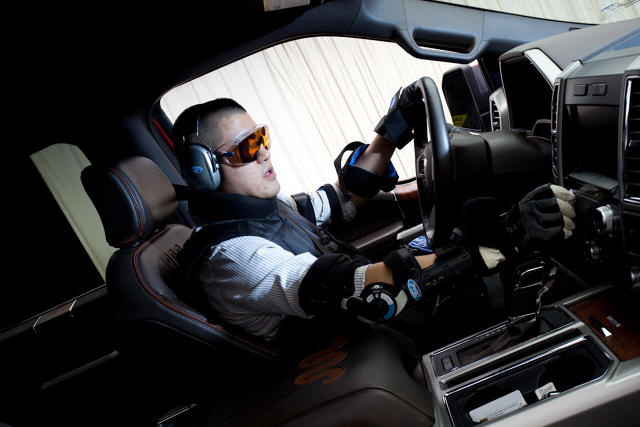
Why Is automotive Design So unhealthy?
The germ of Ford’s reorganization came a yr in the past, right through Mark Fields’s first months as the motor company’s contemporary-confronted CEO. Like a number of new honchos intent on quickly setting a tone, Fields set out to tour the businesses he most hoped to emulate. He taken with Silicon Valley, meeting CEO’s at corporations like Nest, which didn’t have a lot in widespread with a one hundred fifty-12 months old manufacturing large. but a typical theme emerged: a zealous focus on being “person-centered.” To bear in mind why that could be radical—even ridiculous—to a automobile maker, it’s important to take into account slightly about how vehicles are actually designed and built.
At Ford and all its Detroit peers, cars are meant to be efficient to construct, above all. each automotive maker behaves like that. however for Detroit, pressured via stubbornly high manufacturing prices, that good judgment was once even more suffocating. The most suitable approach to pressure down costs whereas creating efficiencies is to break up the availability chain into as many items as that you can—to unfold the pool of tasks amongst as many part makers as conceivable. imagine that from the standpoint of the part makers. To be environment friendly, they need to create whatever piece of the car they’re developing with as so much autonomy as possible: just supply me the specs, and that i’ll get right again to you with an AC gadget which you could plug proper in with the rest of your components. So vehicles get constructed around requirements set via the automakers. Make this knob like this and this wire go here.
That’s the problem. In the sort of necessities-pushed atmosphere, scientific size principles the day, because precision is more uncomplicated to explain than theory—especially if your audience is the engineer who’ll carry on the following segment of work. cars aren’t user-friendly because there’s no person whose job it’s to actually take a seat in the automotive and expertise it like a consumer would. instead, different elements often win the day, such because the sheer wish to put in no matter characteristic the other car firms are touting. we all live with the end consequence, in the automobiles we buy. We spend billions of dollars annually on features that we don’t use. essentially the most beneficiant estimates say that we use best forty% of the features inside the vehicles. And nonetheless we pay 100% of the cost. As Parrish Hanna, Ford’s world director of interplay and ergonomics puts it, “Detroit’s working mode has been a variety of equally balanced voices providing enter, with now not a variety of governance over what’s in and what’s out.”
which you can undercover agent that theme, in the event you discuss with Ford’s headquarters. It’s thinly spread across dozens of structures in Dearborn, a suburb of Detroit, and slightly literally equipped like an unlimited, atomized provide chain. strolling the wide halls of the product building building, I barely saw someone. It used to be like padding around the halls of a tremendous but vague branch of government, with extremely specialised groups cloistered behind locked doorways, and everybody inside of hidden out of sight in the back of high cubicles. So whereas you could steadily hear Mark Fields speaking about “specializing in the client experience,” it’s important to marvel how so much Ford can in truth change— which makes Parrish Hanna’s job sound either exhilarating or terrifying.

creating a brand new more or less group
Hanna has been at Ford for 3 years—dog years in Silicon Valley, however he’s a noob with the aid of Ford requirements, where it’s typical to seek out researchers and designers who’ve by no means labored anywhere else because grad school. When he first began on the firm, he did a simple check, to take the measure of how onerous his job, overseeing all of Ford’s interface design, would be. First, he asked individuals to take a seat in a automotive and go their arms. Then, he had them take a look at all of the icons and buttons and knobs they may see, guessing what each one in truth did. He did it over and over again, throughout all completely different car producers. And uniformly, the consequences have been atrocious. Ford wasn’t an outlier, however it wasn’t a celebrity either.
as of late, Hanna sits in a long, open hangar that feels like an empty automotive dealership, with full-sized automobile prototypes shrouded under tarps proper outdoor his workplace. simply sitting here used to be slightly of an accomplishment. earlier than Hanna befriended the brand new head of inside design, the interface and interiors designers used to sit in structures a five-minute power apart. one way or the other, these two functions used to be so impartial that they didn’t need to be shut. The strangest thing about sitting and speaking with Hanna right here, where nothing a lot appears to be happening, is how quickly the conversation moves towards the longer term. Silicon Valley may well be almost 2,500 miles away, however from where Hanna sits, Apple and Google may just as well be rummaging around in his place of work, touching all of his stuff.
It wasn’t too long ago that Detroit was cosseted from the churn you’d to find in the remainder of the patron marketplace. It made feel. cars were made on seven-year cycles, and it took so long to ship one to market that carmakers gave little thought to how a car in comparison with, say, any person’s newest pc or television. No extra. As smartphones have exploded, one downwind effect is that it’s changed how carmakers view they’re own wares. now not are automobiles competing with other vehicles; they’re competing for our affection. As one dressmaker put it to me, “the auto makers are petrified of letting expertise into their automobiles. as a result of after they do this, does Apple own the experience or do they?” And yet they’re being compelled to meet shoppers halfway who are stressful that every giant factor they buy be as person-pleasant as their phone.
Hanna sees two primary threats. First is the truth that differentiation among vehicles is dissolving. 2d, cars themselves are starting to mean one thing completely different in our daily lives. routinely, automobiles are already achieving one thing close to the point of commoditization. in comparison with 10 or two decades ago, it’s in fact onerous to discover a stone-cold horrific new automobile. They’re all lovely reliable, they usually all have an identical features, no matter the associated fee. There’s no cause to assume that instrument received’t be the same, inside cars. “You attain some extent where it’s all just right sufficient,” Hanna says. “after which it’s about brand. similar to denims. They’re all relaxed, they all fit, so why do you change brands.” (He does recommend one alternate direction: non-public information, mixed with algorithms and sensors, might permit people to customise their in-automotive expertise.)
The harder problem to cope with is the shifting meaning of what a automobile is, due to products and services reminiscent of Uber and technologies equivalent to driverless cars which may make car ownership an antiquated thought. “that means expanding the products and services inside a automobile and expanding the definition of mobility.” the automobile business would develop into about promote products and services, as a substitute of selling cars. imagine a automobile being much less like a field you buy that gets you from one location to every other, and more like a pc you sit at, filled with apps for biding time as you’re driven to work. Already, Ford has being enthusiastic about whether or not a automobile will have to change into an API that different firms tap into. no matter does happen although, Hanna says it’s clear that the idea that Google or Apple will merely port their usaover to our automobiles is a long way oversold. “We get romanced with the aid of the idea of Apple’s automobile Pay or Android Auto. however the complexity of a tool OS simply isn’t compatible with a car.” In cars, you don’t drag and drop. The interface is mostly seen through your peripheral vision. And any task other than merely driving is one that shouldn’t be all that attractive, by means of design. It should be invisible.
That’s largely the case in Sync three, Ford’s latest dashboard interface design—the first one that Hanna has guided to market due to the fact arriving on the firm. when I used it over a couple days, driving a brand new Ford break out, it aced the hardest problem in UX, the No directions test. On the primary try, I had no problem determining the navigation or piping tune from my cellphone—which is spectacular given the sorry state of automotive UX, and a mark of how much nuts-and-bolts UX work Hanna’s group did. but still, Sync three is a long way from being delightful, or gorgeous. Sync three is a transition product. Hanna hopes that reshaping Ford around the consumer expertise will fast alternate now not best how Ford sees its automobiles, however how it sees itself. If he is proper, then a more beautiful product is almost inevitable for those who create a extra stunning process.
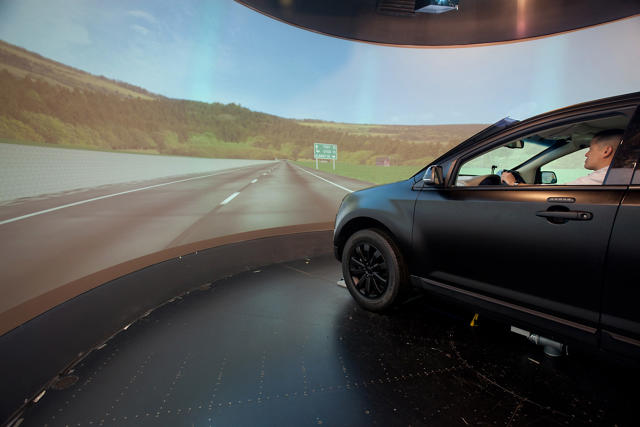
a brand new technology of Prototyping
Ford’s virtual using simulator is an almost comically concerned computing device. It looks as if one thing NASA built for astronauts: within a hangar with forty-foot-tall ceilings, there’s a white geodesic dome lofted some 15 ft off the bottom atop large hydraulic pistons. within that dome is a full-sized SUV, taken off the road and kitted out with cameras, sensors, and specialized equipment. the aim of the entire hydraulics is to simulate the yaw, pitch, and roll that you just expertise whereas riding—the whole dome can transfer more than 10 toes from side to side and tiled up and down, to mimic the feeling of mashing the accelerator or swerving between lanes.
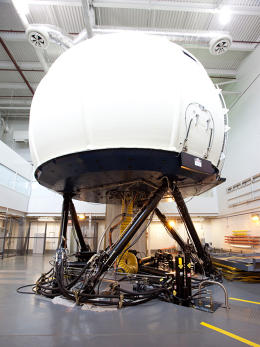
Hop in, and you can force across any selection of simulated roads, projected on the dome’s interior walls; the surroundings all reacts like you’d expect from the true world. The photos are still chunky and pixelated, and for a minute, you’re feeling like you’re inside of a great Nintendo riding recreation. however if you start shifting, the sensation of actually driving begins to tickle your senses. no one needs to inform you not to veer into the oncoming lane. You’re afraid to veer into an oncoming lane, identical to in real life. It’s right here where Ford assessments issues like the lights that flash whilst you veer our of your lane, or how long it takes for a distracted driver to snap their attention back to the street. They do it to me, asking me to learn off numbers from a display under the dashboard—and then the truck in front of me slams to a cease, and i barely notice in time to steer clear of hitting it. recreation over!
it can be arduous not to be impressed with the aid of all of this. Like a number of large research instruments, it can be the made from a decade of labor from a single staff, headed by Ph.Ds. spectacular as it is, Ford is exhibiting me this simulator figuring out that I’ll be amazed. And it tends to enhance the huge gulf between trying out and designing. The latter isn’t about selecting between choice A and option B, based on the information. It’s about rigging things up, seeing how they feel. instrument designers comprehend this. They iterate all the time. So do industrial designers, who’ll mock everything up in one million 3D-printed variants before sending anything else to a manufacturing facility. And but most automotive corporations don’t do that in any respect. beneath Hanna, Ford’s been working another way. They now create sensible fashions of their in-car interfaces, in laser-cut foam and 3-D-printed plastic, then rig those up in vehicles, and in truth pressure them round. Hanna doesn’t say it, but you’d guess that there was a variety of grumbling when the idea of using round barely working prototypes was once floated around HQ.
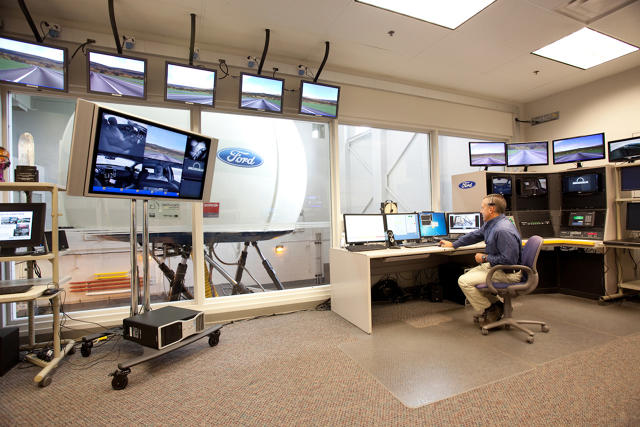
however Hanna does admit that Ford continues to be making an attempt to determine simply how you can an in fact symbolize a user’s standpoint, within a company. Does it mean tapping a primary experience officer? Or another manner of working, some device of checks and balances that reorders how choices are made? “good design is organizational efficiency,” he says. however alternate can be maddeningly exhausting to pull off, as a result of any large company has its own inertia, which can sap a brand new concept that, by the time it comes for the worker bees to work, nothing has modified. “It’s onerous to assert, ‘here’s the governing physique, and right here’s how we make a decision what goes in and what comes out.’ And what comes out is solely as necessary. That’s the way you provide priority to how people are in reality the use of one thing, as a substitute of what your competitors are doing,” he says.
That ultimate section, Hanna says, is telling. Ford used to focus on “benchmarking,” or evaluating all the features of opponents and simply including in what they didn’t have. lately the company is starting with UX principles—what the consumers’ mind-set is, what they are expecting of an interaction, what they are expecting of a automobile. consequently, quite than including features, the features may just disappear or be rethought according to wide UX ideals comparable to seamless transitions between your phone and your dashboard media. CEO Mark Fields’s prime deputies are singing in tune. As Hanna describes it, a couple years of guidance—with consultants equivalent to Ideo, and likewise thru courses at Stanford’s d.college—have effected a change in how the brass evaluation tasks. “Our executives, every time you present to them, they ask what the person-expertise rules are,” says Hanna. “Then they ask the way you’ll bring these to existence.”
maybe the perfect example of that new mindset is how Ford has been developing “mobility experiments” set up around new consumer experiences, starting from on-demand busing to a peer-to-peer car sharing association that lets house owners gather revenue from their cars. The experiments are as so much about shifting Ford to providing services and products instead of simply selling vehicles as they are about prototyping new ways for Ford to consider UX.
I recently requested Fields whether all these design-targeted initiatives, despite the fact that they arrive together with his blessing, have an opportunity to vary a company so giant and so old as Ford—an organization built for economies of scale, which arrive as a result of people are siloed. In his telling, effecting such change is subtle: “It comes back to our senior staff challenging folks not to take anything else for granted,” he says. but also, making things appear familiar. He couches this new rush into person expertise as a return to “making folks’s lives better”—and accordingly, Fields hopes to make this new top into one thing that feels acquainted to the corporate. “that enables us to challenge our cultural norms,” says Fields. “but it surely takes time.” maybe his keenest insight is that success, in any one of these ventures, isn’t the purpose. moderately, the purpose is the new course of, and the new mind-set it represents. “we have to worth successes but additionally the things that didn’t work as well. That’s how we can examine new issues.”
now we have reached a odd cross, within the annals of business. Silicon Valley has cottoned to the gospel that user expertise is king. It’s a lesson learned just because mobile apps and instrument have become so ubiquitous that a smartly-designed carrier is now probably the most simplest issues that keeps clients loyal. And so Silicon Valley convinces the CEO of Ford, a a hundred and fifty-year old manufacturing company, of this truth, which it invented to deal with challenges of making money off of software. And the Valley will not be unsuitable! cellphones have in reality modified what we demand from our homes, or workplaces, our vehicles. mobile is consuming the world, however it’s additionally altering how we see it.
the problem then for Ford, or for any firm that wish to shift the best way it thinks about crafting products, is that in Silicon Valley, the place firms are made in a single day, change is relatively easy. Don’t like the established order? start from scratch. What’s not so easy: Convincing a company with over 187,000 staff to trust in a new course of. essentially the most interesting corporations to watch as large trade will get obsessed with design aren’t the startups, but the behemoths. it’s firms like Ford which can be actually checking out the boundaries of what design can do.
All photographs: Corine Vermuelen for quick firm
<img alt="
Ford’s aging suit is meant to lend a hand engineers develop empathy for customers in contrast to themselves.
” src=”http://a.fastcompany.internet/multisite_files/fastcompany/imagecache/slideshow_large/slideshow/2016/03/3057494-slide-s-7-ford.jpg”>
<img alt="
The swimsuit simulates diminished vision, listening to, and movement—making even simple duties tougher to navigate.
” src=”http://d.fastcompany.web/multisite_files/fastcompany/imagecache/slideshow_large/slideshow/2016/03/3057494-slide-s-6-ford.jpg”>
<img alt="
A element of the go well with’s elbow brace, which restricts your vary of motion.
” src=”http://b.fastcompany.net/multisite_files/fastcompany/imagecache/slideshow_large/slideshow/2016/03/3057494-slide-s-8-ford.jpg”>
<img alt="
within Ford’s digital-truth testing atmosphere, which is used to test new interfaces within the automotive.
” src=”http://b.fastcompany.web/multisite_files/fastcompany/imagecache/slideshow_large/slideshow/2016/03/3057494-slide-s-4-ford.jpg”>
<img alt="
The dome’s huge hydraulics move it in synch with the auto’s acceleration, braking, and steering. using the VR automotive actually seems like riding.
” src=”http://c.fastcompany.internet/multisite_files/fastcompany/imagecache/slideshow_large/slideshow/2016/03/3057494-slide-s-1-ford.jpg”>
<img alt="
The monitoring room outside of the VR dome, where researchers watch digicam feeds of consumer conduct.
” src=”http://a.fastcompany.internet/multisite_files/fastcompany/imagecache/slideshow_large/slideshow/2016/03/3057494-slide-s-three-ford.jpg”>
fast company , learn Full Story
(35)

